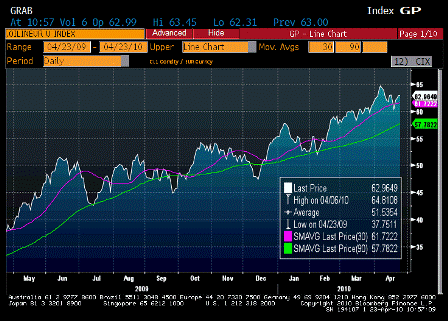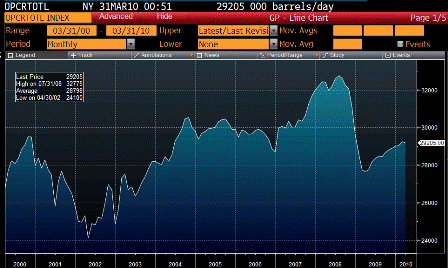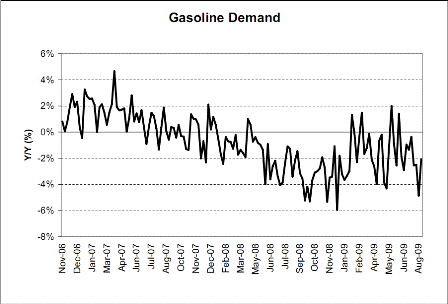I agree the guilty need to be identified and punished, but that doesn’t stop with those responsible at BP, their suppliers and contractors, or the regulators who failed us. It runs much deeper, extending to our failed political process.
The financial crisis is analogous. The criminals need to be tracked down and prosecuted, as Bill Black did in after the savings and loan crisis. But the financial architecture/institutional structure that set it all up is at least equally at fault, as is the political process that created that institutional structure, as per my response to Roger.
I do think costs and losses should be paid for by BP, even if that means insolvency proceedings and 100% losses to shareholders and creditors.
I consider this a no bailout zone.
And any drop in aggregate demand/increase in unemployment should be ‘offset’ with whatever size tax cut and/or revenue sharing is necessary to sustain full employment.
And adding to Rogers idea again, my proposal for an $8/hr job for anyone willing and able to work should include those jobs for anyone wanting to join in the clean up efforts. (Not to say that clean up efforts should be limited to those workers.)
By Rodger Malcolm Mitchell
Those rotten scoundrels have ruined our oceans and our shores. They should pay not only for the cleanup, not only for the jobs lost because of the pollution, not only for the damage, but they even should pay for jobs lost because of President Obama’s decision to stop deep-water drilling. BP should pay, pay, pay until they bleed, then pay some more. These people must be held accountable.
Phew! Now I feel better.
But, wait. What is BP? It’s a legal description, nothing more than words on a piece of paper. It has no physical existence. You can’t punish BP any more than you can punish a law or a page of sheet music. BP, as a legal entity, neither caused, nor can cure, the oil spill. That disaster was caused by people, and it is people, not a piece of paper, who must be held accountable.
So the question becomes, which people should be punished? BP has a huge number of employees, the vast majority of whom had nothing to do with the oil spill. It has a huge number of innocent shareholders, a huge number of innocent suppliers, a huge number of innocent oil users. In some ways, you and I are part of BP, because as users of oil and oil-related products (i.e. all products) we are affected by what its employees do.
Which of those people should be “held accountable”? What if holding all of BP “accountable” means thousands of innocent people will be fired, or innocent suppliers will be put out of business, or all of us will have to pay more for our oil and gas, or all of us who hold BP stock, either directly or as part of a fund, will lose? What if punishing BP has an adverse effect on the whole economy. Is that wise?
Somewhere between vengeance and economic reality lies the answer. Punishing BP, as a company, punishes all of us who already are suffering from the gusher. And though widespread vengeance may feel good, there is a “cut-nose-spite-face” aspect to be considered. So, what can be done to help prevent a repeat?
First, let’s identify the people specifically responsible. Certain BP employees. Certain employees of BP suppliers. The guys who mixed and poured the rotten cement that didn’t hold.
And, with all the focus on BP, let’s not forget those government employees who failed equally. I’m talking about the people who, after having been bribed with nice gifts, so readily approved all of BP’s actions.
Yes, we should fine, fire, even jail all the responsible individuals. That would help prevent future problems. Of course, that doesn’t pay for all the efforts to cure the situation nor for all the losses. Who should pay the billions for that?
If you really care about the economy, and are not just flailing out in retribution, you would agree the economically wise approach would be for the federal government to pay. That way, the guilty would be punished, the innocent spared and the economy stimulated.
Government pays = people benefit. BP pays = people pay.
So what’s your choice: Vengeance or money in your pocket?
warren mosler says:
June 15, 2010 at 7:15 am
Well stated!
And we do know we all are responsible.
Our government regulators failed us much the same way they failed us in the financial crisis.
We have failed to create the alternative transportation (including user friendly public transportation, alternative fuels, incentives to reduce our travel needs, etc.) that could cut our use of crude oil by 50% or more, removing the need and incentives for what we know is dangerous offshore drilling.
We should know that the strategy of rushing to use up our domestic oil as soon as we discover it, rather than saving it for later when the rest of the world has used up theirs, is not in the best long term interest of our children and grand children.
We have elected representatives at all levels based on most everything but the wisdom of proposed agendas, often due to incentives we allow to remain in place regarding campaign finance, the power of special interests, and the incentives in place for our two party system to deliver candidates on criteria unrelated to their capabilities to provide the leadership on these critical issues.
Don’t get me started!
Thanks!





